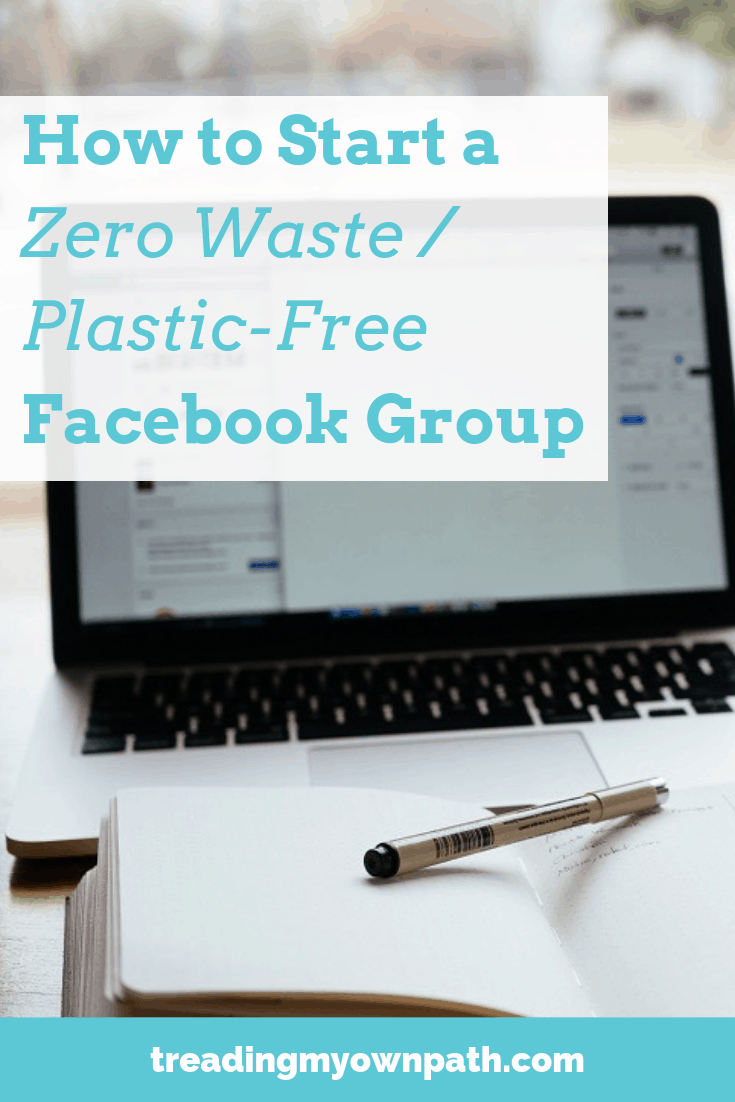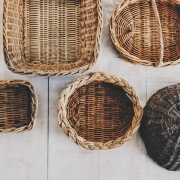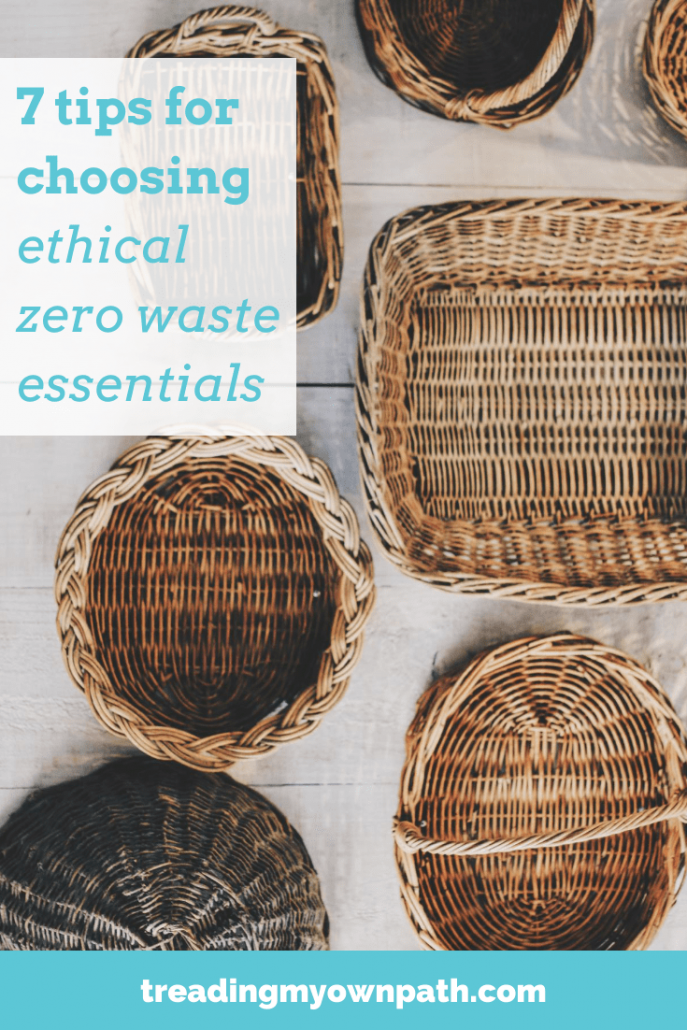Zero Waste Travel: Tips for a Zero Waste Road Trip
Having a zero waste and plastic-free routine at home is one thing, but making it work whilst on holidays (and away from home) is quite another. There’s dealing with new places and situations; having limited options to buy anything in bulk or recycle; and being without many of the tools that make zero waste living possible at home – and they all create challenges for keeping waste down.
Having been on plenty of road trips and holidays since I started my zero waste journey (goodness, don’t I sound well travelled?! It’s more that I’ve been living this way for 5 years rather than that I go on holidays all the time!) I’ve learned plenty of tricks along the way to help reduce my waste.
If you’re planning a road trip or holiday/vacation and you want to keep the waste down (which of course you do!), this one is for you.
Reducing Waste on Holiday: Before You Leave
As with anything and everything zero waste, planning is important. Waste tends to happen when things are unplanned, and convenience suddenly steps in. That doesn’t mean spreadsheets or anything complex. Just thinking about where you’re going, what you’ll be doing and likely scenarios, and google the options.
Check Out What Facilities Exist Where You’re Heading.
There are three types of facilities I check out before we go somewhere:
1. Shops, cafes, restaurants.
Knowing what kinds of shops exist and the kinds of food they sell is a good place to start. (For example, is there a supermarket, a service station, a bulk store, a Farmers Market?)
Considering what cafes and restaurants exist and the kinds of foods they sell is also useful (especially if you are vegan/vegetarian, gluten-free or have other dietary requirements). Opening hours are worth looking into too.
Looking at the reviews on Tripadvisor is helpful as a starting point, and we’ve used the website Happy Cow several times to find out vegetarian and vegan options in unknown places. If your friends or family that have been to the destination before, ask them to share their experiences.
2. Recycling Facilities.
In WA, not much is recycled north of Perth. Many of the places we stayed on this trip only recycle aluminium cans. My husband and dad both enjoy a beer, so whilst we were away they opted for beer in cans which we could recycle along the way, rather than glass bottles, which aren’t recycled.

(Whilst we always take home anything that cannot be recycled, glass is not truly recycled in Perth but crushed into road base, so choosing cans is a better option. There was a small amount of glass too, and that came home with us.)
3. Composting Options.
It is my dream that one day everyone with a composting bin will register their bin on the ShareWaste website. It’s a free service which connects home composters with people with excess food scraps.
I always check this service before I travel. I also search for community gardens in the ares that might have compost bins.
Sadly, rural WA is very lacking in bins on the map yet, so I knew that whatever food waste we took with us we would have to bury, or bring home.
Go Food Shopping Before You Leave
Depending on how much you intend to eat out whilst away, and the access you will have to refrigeration and cooking facilities, you might not want to take heaps of groceries with you, but it’s worth considering the basics: tea, coffee and snacks ;)
There are no bulk stores in WA further north than Perth, so we did a big bulk shop at The Source Bulk Foods (I’ve never bought so many nuts!) and bought fruit and vegetables from the local fruit and veg store to last us the first few days.

I made a big Ottolenghi-inspired salad to take with us, and also a big batch of sugar-free muesli. As well as fresh produce, I also took big jars of rice, quinoa and lentils so I could make meals at home.
Pack Reusables and Other Tools
Packing a water bottle, reusable cutlery set and reusable coffee cup goes without saying – these things practically live in my handbag anyway.
I also take a number of cloth produce bags, and either Pyrex containers, my stainless steel tiffin, or both. I have a set of round Pyrex containers that fit one inside the other so don’t take up too much space.
We take an esky with us to keep things cool in between destinations.
As well as the more obvious reusables, there are a few things I always pack for road trips. I always take a sharp knife (it makes all the difference when you’re trying to cook from scratch), our salt and pepper grinder and our coffee press. This time I took a tea strainer also.
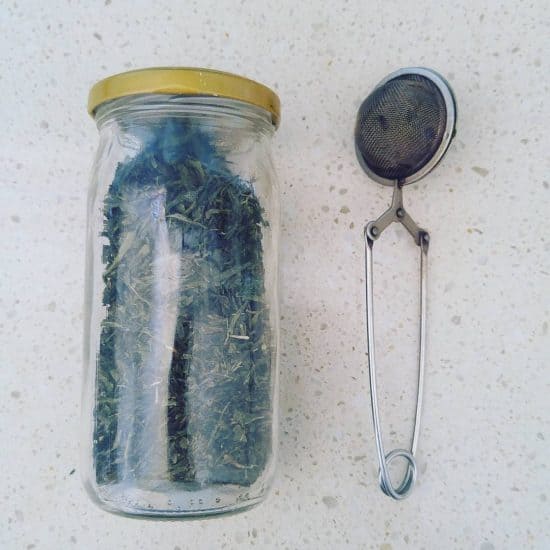
This one might be a bit out there, but I also take our food processor with us.
I once met a lady who took her food processor with her when she went overseas. I’m not that extreme, but it is the most useful tool in my kitchen, it doesn’t take up much space, and it does so many things that now I always pack it. It’s great for making nut milk along the way, but we often use it for many other things (it has a heating function).
Dealing With Compost
If you don’t want to throw food scraps into landfill (and I definitely don’t), there are a few options: finding a composting facility locally, burying food scraps along the way, or taking them home with you.
Burying food scraps isn’t ideal, because it means using a rental home back yard without their knowledge, other private land without the owners’ knowledge, or public land. There’s the chance it could attract pests, or be dug up by dogs. A few veggie scraps from one person is one thing, but if everyone started doing this, it could be a big problem.
As I can’t bring myself to throw food scraps away, and we were away for two weeks, I did bury some of my waste.
I store food scraps in the freezer (in a Pyrex container) until I’m ready to bury it. I also blended some of it in the food processor to break it into smaller pieces, to help it compost more quickly. I tend to dig a few holes rather than one big one, as deep as I can, and ensure the waste is well covered with soil.
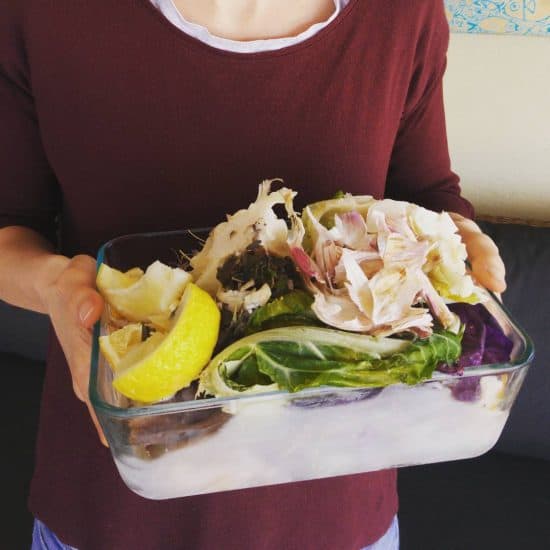
I do feel a little guilty, but I figure it is the lesser of two evils.
Once we hit the half way mark of the trip, I decided that we’d take what we created back to Perth with us. There was more room in the esky for food scraps, which were kept frozen.
Avoiding Single Use and Travel Items
Because we bring our own tea and coffee making facilities, we never use the single-serve tea and coffee. If any other single-use items are provided, like biscuits or breakfast cereal or UHT carton milk, we leave it in situ.
We always bring all of our own toiletries too, to avoid using individually wrapped soap or mini bottles of shower gel. There was a time when I’d clear out the place we were staying of anything miniature, but those days are long gone. They stay where they are.
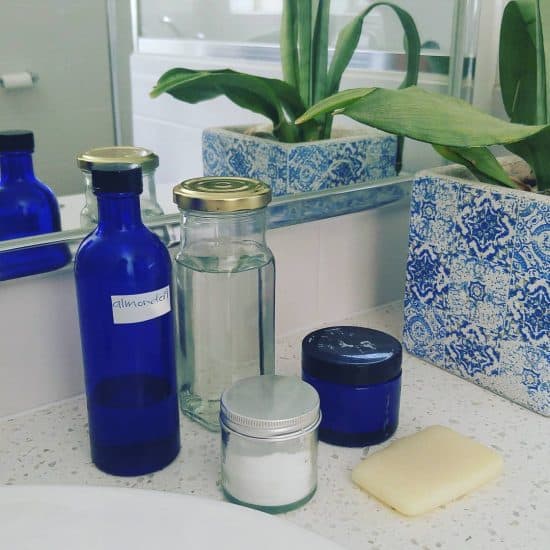
I’ve also learned to bring our own dishwashing liquid, dish brush and cleaning cloth with us. The cloths provided are always plastic, and will be thrown away as soon as we leave, even if it’s one night. Should we need to use them, we take them with us so we ensure they are used until they wear out.
Our holiday packing isn’t the most minimal, but because we never take much clothing or footwear, there is always room to include reusables. I know I’ll have a much more relaxing holiday if I’m not creating waste. Funny that these days my priority is packing Pyrex rather than extra pairs of shoes!
Remembering reusables is something that just takes practice. The hardest thing is dealing with food scraps. If you have a compost bin at home, please consider registering it on the ShareWaste site. It’s free to use, and even if you don’t think you live in a touristy area, you never know who might be passing through.
I’m looking forward to the day when I can go on a road trip and there’s more compost bins to stop at along the way than service stations ;)
Now I’d love to hear from you! What tips for zero waste road trips do you have? What challenges have you faced whilst you’ve been away from home or on the road? Which tips can you see yourself adopting – or not?! Anything else to add? Please leave a comment below!
[leadpages_leadbox leadbox_id=1429a0746639c5] [/leadpages_leadbox]



